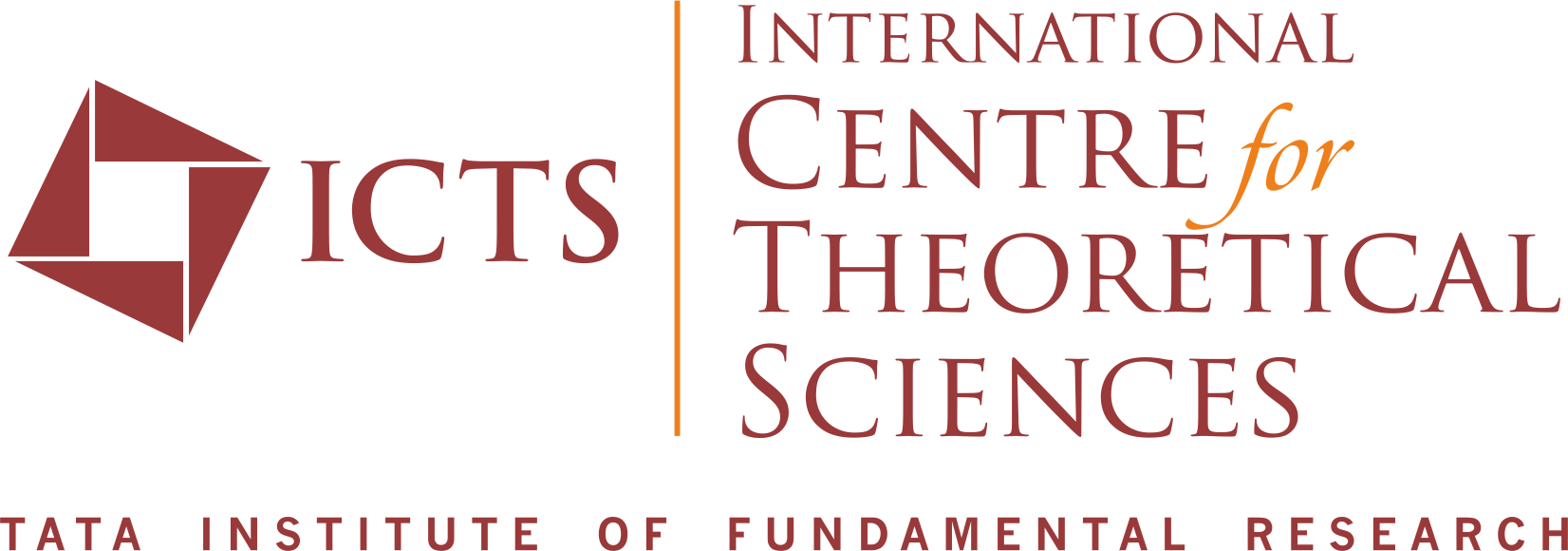Monday, 10 February 2025
TBA
Join me on a journey through the evolution of scattering amplitudes, where we will explore a selection of significant milestones over the last decades. In this personal overview, I’ll highlight key moments that have shaped the field and its trajectory.
In these mini-lectures, I will explore the method of differential equations, a powerful tool for computing Feynman integrals. This approach has found widespread applications, from precision calculations in high-energy scattering amplitudes to the study of gravitational wave physics. More recently, it has also been employed in deriving analytic expressions for integrals appearing in cosmological correlators. Beyond facilitating computations, the method of differential equations reveals deep algebraic structures underlying Feynman integrals, making it an essential technique in modern theoretical physics.
TBA
TBA
TBA
TBA
Tuesday, 11 February 2025
Join me on a journey through the evolution of scattering amplitudes, where we will explore a selection of significant milestones over the last decades. In this personal overview, I’ll highlight key moments that have shaped the field and its trajectory.
In these mini-lectures, I will explore the method of differential equations, a powerful tool for computing Feynman integrals. This approach has found widespread applications, from precision calculations in high-energy scattering amplitudes to the study of gravitational wave physics. More recently, it has also been employed in deriving analytic expressions for integrals appearing in cosmological correlators. Beyond facilitating computations, the method of differential equations reveals deep algebraic structures underlying Feynman integrals, making it an essential technique in modern theoretical physics.
TBA
TBA
Wednesday, 12 February 2025
TBA
TBA
Thursday, 13 February 2025
Scattering amplitudes in N=4 supersymmetric Yang-Mills theory can be computed using the BCFW recursion. There are many ways of running the recursion and hence many formulas for a single amplitude. The amplituhedron, defined by Arkani-Hamed and Trnka, is a remarkable geometric object which encodes N=4 SYM amplitudes and their many formulas. I will give an introduction to the (tree-level) amplituhedron and the mathematics behind it, such as the positive Grassmannian. Time permitting, I will discuss recent developments involving the structure of the amplituhedron, such as the surprising "cluster adjacency" phenomenon.
In these two lectures we will go over some applications of nonlinear algebra to physics. In the first lecture we will take a look at the CHY scattering equations in order to see what algebraic statistics and theoretical physics have in common. In the second lecture, we will consider a classical algebraic variety, the Grassmannian. We will discuss its basic properties and see several contexts in which the Grassmannian appears in positive geometry and physics.
TBA
TBA
TBA
TBA
TBA
TBA
TBA
Friday, 14 February 2025
Scattering amplitudes in N=4 supersymmetric Yang-Mills theory can be computed using the BCFW recursion. There are many ways of running the recursion and hence many formulas for a single amplitude. The amplituhedron, defined by Arkani-Hamed and Trnka, is a remarkable geometric object which encodes N=4 SYM amplitudes and their many formulas. I will give an introduction to the (tree-level) amplituhedron and the mathematics behind it, such as the positive Grassmannian. Time permitting, I will discuss recent developments involving the structure of the amplituhedron, such as the surprising "cluster adjacency" phenomenon.
In these two lectures we will go over some applications of nonlinear algebra to physics. In the first lecture we will take a look at the CHY scattering equations in order to see what algebraic statistics and theoretical physics have in common. In the second lecture, we will consider a classical algebraic variety, the Grassmannian. We will discuss its basic properties and see several contexts in which the Grassmannian appears in positive geometry and physics.
Monday, 17 February 2025
I will review the recent progress on the application of the Amplituhedron framework to study IR finite quantities in the planar N=4 SYM theory. This includes the negative geometry expansion for the Wilson loops and the deformed Amplituhedron which connects to the Coulomb branch amplitudes.
In a classical scattering problem, the classical eikonal is defined as the generator of the canonical transformation that maps in-states to out-states. It can be regarded as the classical limit of the log of the quantum S-matrix. In a classical analog of the Born approximation in quantum mechanics, the classical eikonal admits an expansion in oriented tree graphs, where oriented edges denote retarded/advanced worldline propagators. The Magnus expansion, which takes the log of a time-ordered exponential integral, offers an efficient method to compute the coefficients of the tree graphs to all orders. In a relativistic setting, our methods can be applied to the post-Minkowskian (PM) expansion for gravitational binaries in the worldline formalism. Importantly, the Magnus expansion yields a finite eikonal, while the naïve eikonal based on the time-symmetric propagator is infrared-divergent from 3PM on.
In these lectures, we will discuss two different approaches to on-shell recursion relations that are used to construct scattering amplitudes of various massless theories. The first lecture, based on soft limits of amplitudes, will be on theories resulting from spontaneous (super-)symmetry breaking. The second lecture will focus on the mathematical structures or building blocks that result from BCFW recursion of maximally supersymmetric gluons and gravitons.
In this talk we will review the amplituhedron, the correlahedron, and the relations between them. We will explore the generalisation of the definition of positive geometry required for it (and also for the loop amplituhedron). We will show the equivalence between the correlahedron and a recently defined geometry for four-point correlators. Finally we will discuss the non maximally nilpotent case.
TBA
Tuesday, 18 February 2025
I will review the recent progress on the application of the Amplituhedron framework to study IR finite quantities in the planar N=4 SYM theory. This includes the negative geometry expansion for the Wilson loops and the deformed Amplituhedron which connects to the Coulomb branch amplitudes.
We prove the equivalence between two traditional approaches to the classical mechanics of a massive spinning particle in special relativity. One is the spherical top model of Hanson and Regge, recast in a Hamiltonian formulation with improved treatment of covariant spin constraints. The other is the massive twistor model, slightly generalized to incorporate the Regge trajectory relating the mass to the total spin angular momentum. We establish the equivalence by computing the Dirac brackets of the physical phase space carrying three translation and three rotation degrees of freedom. Lorentz covariance and little group covariance uniquely determine the structure of the physical phase space. We comment briefly on how to couple the twistor particle to electromagnetic or gravitational backgrounds.
TBA
TBA
Wednesday, 19 February 2025
TBA
TBA
Thursday, 20 February 2025
TBA
Positivity properties of scattering amplitudes are typically related to unitarity and causality. However, in some cases positivity properties can also arise from deeper underlying structures. In these lectures, we will discuss infinitely many positivity constraints that certain amplitudes and their derivatives obey called completely monotonicity in the mathematics literature.
In the first lecture, we will discuss completely monotone functions and some of their properties. We shall then show why some objects such scalar Feynman integrals admit this property via integral representations. In the second lecture, we will discuss the connection between complete monotonicity and positive geometries.
I will give a brief review of some recent progress regarding mathematical aspects of three closely-related quantities in N=4 SYM theory: half-BPS correlators, the square of amplitudes and energy correlators.
TBA
TBA
TBA
TBA
TBA
TBA
Friday, 21 February 2025
We discuss the newly introduced hidden zeros in a class of scattering amplitudes. We relate their existence to color-kinematics duality and the double copy. Further we also discuss splitting of the scattering amplitude near these zeros and show how such behaviour can be seen as a result of a residue theorem after a complex shift. Similar shifts allow us to calculate amplitudes of related theories as well.
Positivity properties of scattering amplitudes are typically related to unitarity and causality. However, in some cases positivity properties can also arise from deeper underlying structures. In these lectures, we will discuss infinitely many positivity constraints that certain amplitudes and their derivatives obey called completely monotonicity in the mathematics literature.
In the first lecture, we will discuss completely monotone functions and some of their properties. We shall then show why some objects such scalar Feynman integrals admit this property via integral representations. In the second lecture, we will discuss the connection between complete monotonicity and positive geometries.

